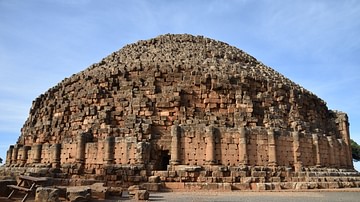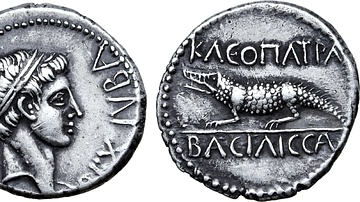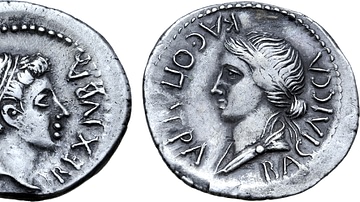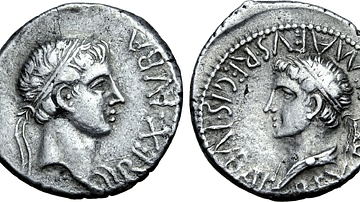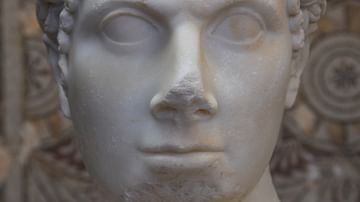Illustration
The Royal Mausoleum of Mauretania in Tipaza, Algeria was built in 3 BCE by Juba II of Numidia (c. 50 BCE – c. 25 CE) and his wife Cleopatra Selene II (40 BCE – c. 5 BCE). This tomb may have been the final resting place of Juba II and Cleopatra Selene II, although their remains have not been found.
The architectural design of the mausoleum is reminiscent of other Numidian tombs, although it was also inspired by the similar Mausoleum of Augustus in Rome which was constructed around 27 BCE. The hilltop mausoleum is built on a circular base and was originally topped with either a pyramid or cone. The monument was originally roughly 60 meters in diameter and 40 meters tall, although damage has reduced its height to around 30 meters.
Cite This Work
APA Style
Bensaou, L. (2018, August 20). Royal Mausoleum of Mauretania. World History Encyclopedia. Retrieved from https://www.worldhistory.org/image/9093/royal-mausoleum-of-mauretania/
Chicago Style
Bensaou, Lamine. "Royal Mausoleum of Mauretania." World History Encyclopedia. Last modified August 20, 2018. https://www.worldhistory.org/image/9093/royal-mausoleum-of-mauretania/.
MLA Style
Bensaou, Lamine. "Royal Mausoleum of Mauretania." World History Encyclopedia. World History Encyclopedia, 20 Aug 2018. Web. 10 May 2024.


